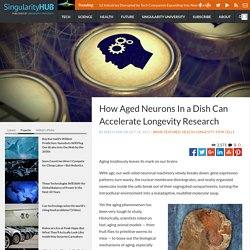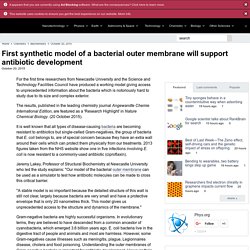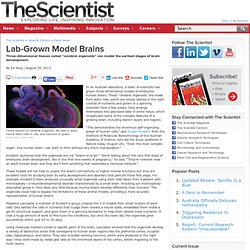

How Aged Neurons In a Dish Can Accelerate Longevity Research. Aging insidiously leaves its mark on our brains.

With age, our well-oiled neuronal machinery slowly breaks down: gene expression patterns turn wacky, the nuclear membrane disintegrates, and neatly organized molecules inside the cells break out of their segregated compartments, turning the intracellular environment into a maladaptive, muddled molecular soup. Yet the aging phenomenon has been very tough to study. Historically, scientists relied on fast-aging animal models — from fruit flies to primitive worms to mice — to tease out the biological mechanisms of aging, especially for tissues that are hard to biopsy from patients, including the brain.
Despite the value of these reductionist models, many life-lengthening treatments fail in clinical trials, and the leap from flies to mice to men remains insurmountable. For example, genes that promote cell division are jacked up, whereas genes involved in inflammation — a strong correlate of aging — are tuned down. It was quite the gamble. First synthetic model of a bacterial outer membrane will support antibiotic development. For the first time researchers from Newcastle University and the Science and Technology Facilities Council have produced a working model giving access to unprecedented information about the bacteria which is notoriously hard to study due to its size and complex exterior.

The results, published in the leading chemistry journal Angewandte Chemie International Edition, are featured as a 'Research Highlight' in Nature Chemical Biology. (20 October 2015). It is well known that all types of disease-causing bacteria are becoming resistant to antibiotics but single-celled Gram-negatives, the group of bacteria that E. coli belongs to, are of special concern because they have an extra wall around their cells which can protect them physically from our treatments. 2013 figures taken from the NHS website show one in five infections involving E. coli is now resistant to a commonly-used antibiotic (ciproflaxin).
Gram-negative bacteria are highly successful organisms. More information: Luke A. An Accurate In Vitro Model of the E. coli Envelope - Clifton - 2015 - Angewandte Chemie International Edition. Communication You have full text access to this OnlineOpen article Dr.

Luke A. Clifton2, Dr. Stephen A. Article first published online: 1 SEP 2015 DOI: 10.1002/anie.201504287 © 2015 The Authors. Issue. Lab-Grown Model Brains. Cross-section of cerebral organoid; All cells in blue, neural stem cells in red, and neurons in green.

MADELINE A. LANCASTERIn an Austrian laboratory, a team of scientists has grown three-dimensional models of embryonic human brains. These “cerebral organoids” are made from stem cells, which are simply bathed in the right cocktail of nutrients and grown in a spinning chamber. Over a few weeks, they arrange themselves into pea-sized balls of white tissue, which recapitulate some of the complex features of a growing brain, including distinct layers and regions. “This demonstrates the enormous self-organizing power of human cells,” said Jürgen Knoblich from the Institute of Molecular Biotechnology of the Austrian Academy of Science, who led the study published in Nature today (August 28).
This "Liver On A Chip" Lets Researchers Forgo Animal Testing. Can technology help us put an end to animal experimentation? Alya Red: A Computational heart. Gut-On-A-Chip, The Latest In Scientists’ Attempt To Mimic Organs In The Lab. Organ-on-a-chip technologies seek to replace animal models and cell culture by allowing scientists to study human tissue with three-dimensional structure and, with microfluidic channels, is bathed in fluids in ways that mimic normal physiology.

Scientifically speaking, the ideal test subject for medical research is the human being. But, for obvious reasons, we resort to the next best option: experimenting on animals. A relatively new trend in research labs, however, seeks to bridge the divide between the ideal human subject and ethical barriers. Researchers are using human tissue to create devices that mimic the three-dimensional realities of organs. These “organ-on-a-chip” technologies could not only do away with animal models that have proven disappointingly unreliable, but their ease of use and affordability could speed up the drug discovery process. Inventor Of Biochip That Makes 10,000 Simultaneous Measurements Wins “Oscar For Inventors” – And $500,000. With thousands of valves and pumps, this microfluidic biochip has already been used to discover drugs and solve protein structures.

An inventor used the same principles of an integrated circuit to develop a ‘biochip’ that can perform nearly 10,000 independent simultaneous measurements – orders of magnitude above and beyond pipetting scientists in the lab. The chip is already being used to perform basic research and to discover new drugs. For his ingenuity, the chip’s inventor was recently awarded the $500,000 Lemelson-MIT prize for exceptional innovators. The chip contains tens of thousands micromechanical pumps and valves that move nanoliter volumes of liquid through microfluidic channels in a coordinated manner. With its multitude of working parts, an experiment that would normally take 18,000 steps and a week to perform could be completed with the chip in just three hours and in just 200 steps.
From the Quake lab website, presumably a rudimentary schematic of the chip. Lab-Grown Model Brains. Now Police Can Reconstruct Your Face From DNA Evidence. This Could Be the First Animal to Live Entirely Inside a Computer.